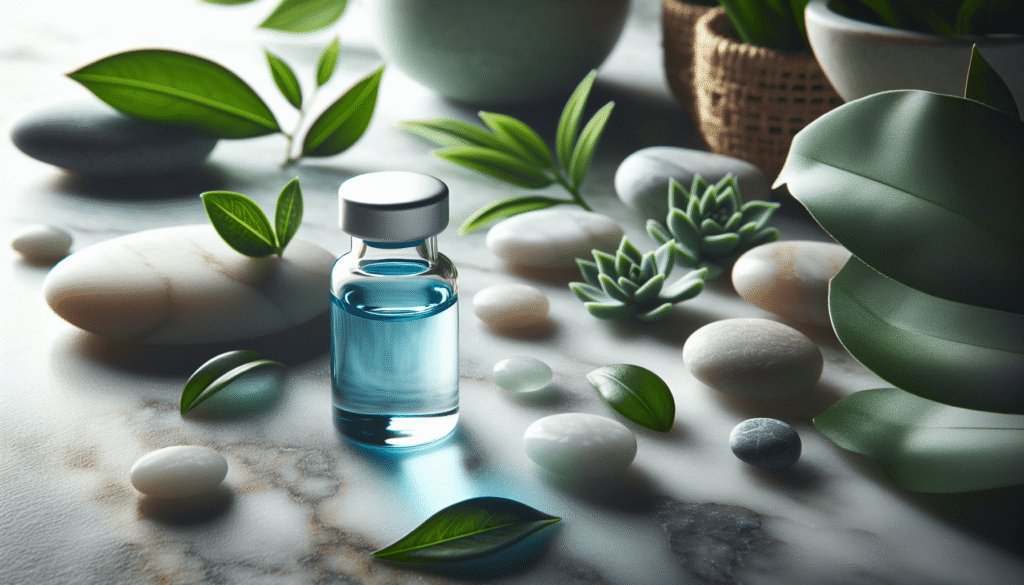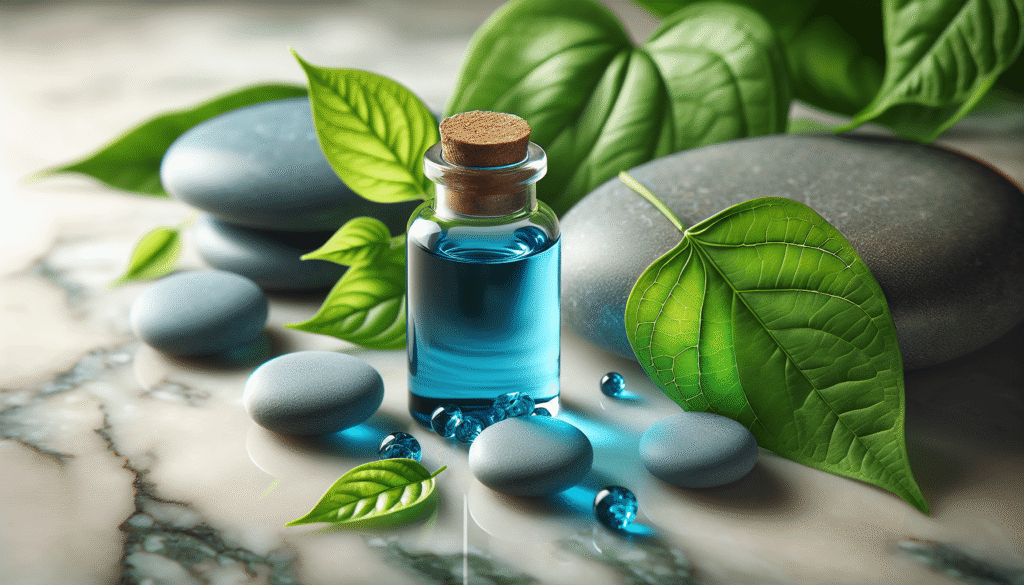
Have you ever wondered how certain skincare ingredients can stand the test of time and consistently deliver results? One such ingredient that has garnered attention is Methylene Blue. While primarily recognized for its medical applications, recent studies and anecdotal evidence suggest that Methylene Blue may also serve as an effective treatment for skin rejuvenation.
Understanding Methylene Blue
Methylene Blue is a synthetic chemical compound that has been used for decades in various fields, from medicine to biology. Its deep blue hue has made it a staple in laboratories, yet its benefits extend beyond scientific endeavors.
The Chemical Properties of Methylene Blue
Methylene Blue, or methylthioninium chloride, is a phenothiazine derivative. Its chemical structure allows it to function as a powerful antioxidant and electron donor. Understanding its properties is crucial as they directly contribute to the potential benefits for skin rejuvenation.
Historical Context and Uses
Historically, Methylene Blue has been used as a dye and an antiseptic. In the medical field, it has treated conditions such as methemoglobinemia and served as a staining agent in biological research. However, its properties have attracted attention in the realm of skincare, particularly in promoting cellular repair and regeneration.
How Methylene Blue Works on the Skin
To grasp How Methylene Blue aids skin rejuvenation, you must comprehend its mechanism of action. This understanding will help you appreciate its potential benefits more thoroughly.
Antioxidant Properties
Methylene Blue acts as an antioxidant by neutralizing free radicals, which are unstable molecules that can cause cellular damage. By combating oxidative stress, Methylene Blue helps maintain skin health and integrity.
Cellular Energy Production
In addition to its antioxidant capabilities, Methylene Blue enhances mitochondrial function. Mitochondria are the powerhouses of our cells, responsible for producing energy. This increased energy production can contribute to improved skin cellular function and regeneration.
Anti-Inflammatory Effects
Inflammation is a key player in various skin conditions. Methylene Blue’s anti-inflammatory properties may help calm irritated skin, reducing redness and discomfort. This can make it beneficial for those struggling with acne, rosacea, or other inflammatory skin issues.

Application Methods of Methylene Blue
Knowing how to apply Methylene Blue effectively is essential for skin rejuvenation. Various methods exist, each with its own sets of advantages.
Topical Application
Topical applications involve direct application of Methylene Blue on the skin. This method allows for targeted treatment of specific areas. When using Methylene Blue in this manner:
-
Dilution: Always dilute Methylene Blue with a carrier oil or a suitable solvent. This helps prevent skin irritation.
-
Patch Test: Conduct a patch test on a small area of your skin to ensure you do not have an adverse reaction.
-
Application: Apply a thin layer to the desired area, and let it absorb for a few minutes before rinsing off.
Serums and Creams
For those seeking convenience, Methylene Blue-infused serums and creams are available. These products often combine Methylene Blue with other beneficial ingredients to enhance effectiveness. When using such products, follow the manufacturer’s guidelines for application to achieve optimal results.
Professional Treatments
If you prefer a more hands-on approach, many dermatologists and estheticians offer professional treatments that incorporate Methylene Blue in clinical settings. These treatments may involve light therapy designed to enhance the absorption and efficacy of Methylene Blue.
Safety and Precautions
While Methylene Blue shows promise for skin rejuvenation, it is crucial to approach its use with caution. Understanding the safety measures will ensure a positive experience.
Potential Side Effects
Methylene Blue can cause skin staining, which may be undesirable. Other side effects may include:
- Irritation: In some individuals, Methylene Blue may lead to irritation, especially if not properly diluted.
- Allergic Reactions: Although rare, allergic reactions could occur. Signs include redness, itching, or swelling.
Contraindications
Before using Methylene Blue, consider the following contraindications:
- Pregnancy: Consult a healthcare professional if you are pregnant or breastfeeding.
- Existing Skin Conditions: Individuals with chronic skin conditions should seek advice from a dermatologist before use.

Combining Methylene Blue with Other Ingredients
To amplify the rejuvenation effects, Methylene Blue can be combined with other skincare ingredients. This approach may yield better and more comprehensive results.
Hyaluronic Acid
Hyaluronic Acid is renowned for its hydrating properties. When paired with Methylene Blue, the skin benefits from increased moisture retention, which helps reduce the appearance of fine lines and wrinkles.
Vitamin C
As another powerful antioxidant, combining Methylene Blue with Vitamin C can enhance overall skin brightening and rejuvenation. This duo works synergistically to combat free radicals and boost collagen production.
Retinol
Retinol is a widely used ingredient for its ability to promote cell turnover. When combined with Methylene Blue, you may experience enhanced skin renewal without heightened irritation that sometimes accompanies retinol usage alone.
Understanding Skin Types
It’s vital to understand that skin type influences how Methylene Blue affects your skin. Adjusting usage based on your skin type will yield the best results.
Oily Skin
If you have oily skin, Methylene Blue may help regulate sebum production while providing necessary hydration. Use it judiciously to avoid exacerbating oiliness.
Dry Skin
For individuals with dry skin, incorporating Methylene Blue into your regimen may assist in cellular repair and restoring moisture balance. Pair it with a heavy moisturizer to lock in hydration.
Sensitive Skin
Those with sensitive skin should approach Methylene Blue with caution. Always conduct a patch test and consider diluting it further to minimize irritation.
Combination Skin
If your skin exhibits both oily and dry areas, tailor your application. Consider using Methylene Blue on oily patches while employing hydrating ingredients on dry regions.
Incorporating Methylene Blue into Your Skincare Routine
Integrating Methylene Blue into your skincare regimen requires consideration of timing and product layering to maximize benefits.
Morning Routine
In the morning, consider using Methylene Blue with a hydrating serum and a broad-spectrum sunscreen. This helps protect your skin from environmental damage while offering rejuvenative properties.
Night Routine
At night, after cleansing, Methylene Blue can be applied before heavier creams or treatments for targeted rejuvenation while you sleep. Allow it to absorb fully before layering additional products.
Frequency of Use
Start slow. Incorporate Methylene Blue into your routine a couple of times a week and gradually increase as your skin adapts. Monitoring how your skin responds is essential for successful incorporation.
The Role of Diet and Lifestyle
Skin rejuvenation is not solely reliant on topical treatments; your diet and lifestyle choices play a significant role.
Hydration
Staying adequately hydrated is crucial for skin health. Water helps to flush out toxins from your body and contributes to overall skin appearance. Aim for at least eight glasses of water a day.
Nutrition
A well-balanced diet rich in antioxidants—found in fruits and vegetables—can enhance the results of your skincare routine. Consider foods like:
| Food | Benefits |
|---|---|
| Blueberries | High in antioxidants that fight free radicals. |
| Spinach | Rich in vitamins A and C, promoting skin repair. |
| Salmon | Omega-3 fatty acids that enhance skin hydration and elasticity. |
| Avocado | Contains healthy fats and vitamins E and K, crucial for skin health. |
Stress Management
Chronic stress can wreak havoc on your skin. Consider incorporating stress management techniques such as yoga, meditation, or even simple breathing exercises into your daily routine.
Monitoring Progress and Adjusting Your Routine
As with any skincare regimen, monitoring your skin’s response to Methylene Blue is essential. Understanding what is working and what may need adjustment will aid your journey toward rejuvenation.
Observing Changes
Document changes in your skin—both positive and negative. Take photographs before incorporating Methylene Blue and periodically afterward to see visible progress over time.
Consulting Professionals
If you’re unsure about how Methylene Blue is working for your skin or if you encounter adverse reactions, consult with a dermatologist. They can provide personalized advice based on your skin’s needs.
The Future of Methylene Blue in Skincare
As research continues to unfold, it’s crucial to remain informed regarding the evolving understanding of Methylene Blue and its applications in skincare. Engaging with scientific literature and professional opinions will help you stay up-to-date on the best practices.
Ongoing Research
Current studies are investigating the broader implications of Methylene Blue in skin health, including its potential role in treating more severe skin conditions. Watching these developments may ultimately shape your skincare choices.
Conclusion
Methylene Blue’s multifaceted properties position it as a viable contender in the realm of skin rejuvenation. Its ability to act as an antioxidant, enhance cellular energy, and reduce inflammation underscores its potential to transform skin health. Properly incorporating Methylene Blue, along with a holistic approach—including nutrition and skin monitoring—will allow you to harness its benefits effectively.
Diligently adapting your routine and consulting professionals when needed will pave the way for achieving rejuvenated, radiant skin. Embrace the journey with care and patience, and recognize that results may take time, but your diligence will ultimately reflect in your skin’s beauty.